
Forced oscillation technique as a predictor for loss of control in asthmatic children (2020)
Title : Forced oscillation technique as a predictor for loss of control in asthmatic children
Researcher : Clin.Prof.Suwat Benjaponpitak
Department : Faculty of Medicine, Siam University, Bangkok, Thailand
E-mail : med@siam.edu
Abstract : Background: A reliable objective tool using as a predictor of asthma control status could assist asthma management.
Objective: To find the parameters of forced oscillation technique (FOT) as predictors for the future loss of asthma symptom control.
Methods: Children with well-controlled asthma symptom, aged 6-12 years, were recruited for a 12-week prospective study. FOT and spirometer measures and their bronchodilator response were evaluated at baseline. The level of asthma symptom control was evaluated according to Global Initiative for Asthma.
Results: Among 68 recruited children, 41 children (60.3%) maintain their asthma control between 2 visits (group C-C), and 27 children (39.7%) lost their asthma control on the follow-up visit (group C-LC). Baseline FOT parameters, including the values of respiratory resistance at 5 Hz (R5), respiratory resistance at 20 Hz (R20), respiratory reactance at 5 Hz, area of reactance, %predicted of R5 and percentage of bronchodilator response (%∆) of R5 and R20 were significantly different between C-C and C-LC groups. In contrast, only %∆ of forced vital capacity, forced expiratory volume in 1 second (FEV1), and FEF25%-75% (forced expiratory flow 25%-75%) were significantly different between groups. Multiple logistic regression analysis revealed that %predicted of R5, %∆R5, %predicted of FEV1 and %∆FEV1 were the predictive factors for predicting the future loss of asthma control. The following cutoff values demonstrated the best sensitivity and specificity for predicting loss of asthma control: %predicted of R5=91.28, %∆R5=21.2, %predicted of FEV1=89.5, and %∆FEV1=7.8. The combination of these parameters predicted the risk of loss of asthma control with area under the curve of 0.924, accuracy of 83.8%.
Conclusion: Resistance FOT measures have an additive role to spirometric parameter in predicting future loss of asthma control.
Keywords: Asthma; Frequency of resonance; Reactance; Resistance; Spirometry.
Link to Academic article: DOI: 10.5415/apallergy.2020.10.e3
Journal : Asia Pacific Allergy Vol.10 No.1 (2020)
Bibliography : Kreetapirom, P., Kiewngam, P., Jotikasthira, W., Kamchaisatian, W., Benjaponpitak, S., & Manuyakorn, W. (2020, January 17). Forced oscillation technique as a predictor for loss of control in asthmatic children. Asia Pac Allergy, 10(1), e3. doi: 10.5415/apallergy.2020.10.e3. PMID: 32099825; PMCID: PMC7016320.
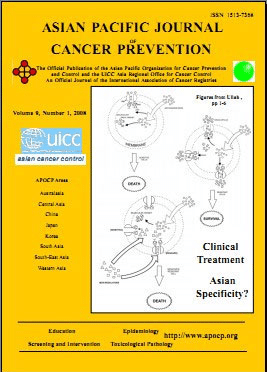
Frequency and association of GSTM1 and GSTT1 gene polymorphisms with survival in breast cancer patients (2020)
Title : Frequency and association of GSTM1 and GSTT1 gene polymorphisms with survival in breast cancer patients
Researcher : Phakarat Tangkhuenkhan 1 Kitiphong Harncharoen 1 Somchai Thanasitthichai 2 Danai Tiwawech 3 Wichai Purisa 2 Pensri Saelee 2 Ruxjinda Wattanalai 4
1 Faculty of Public Health, Mahidol University, Bangkok, Thailand.
2 Research Division, National Cancer Institute, Bangkok, Thailand.
3 Faculty of Pharmacy, Naresuan University, Phitsanulok, Thailand.
4 Siam University, Bangkok, Thailand.
ฐานข้อมูลงานวิจัย มหาวิทยาลัยสยาม : –
Link to article : Asian Pacific Journal of Cancer Prevention, 2020, 21(8), pp. 2251–2257. https://journal.waocp.org/article_89214.html
Journal : Asian Pacific Journal of Cancer Prevention / Scopus
Citation : Tangkhuenkhan, P., Harncharoen, K.,Thanasitthichai, S.,Tiwawech, D., Purisa, W., Saelee, P., & Wattanalai, R. (2020). Frequency and association of GSTM1 and GSTT1 gene polymorphisms with survival in breast cancer patients. Asian Pacific Journal of Cancer Prevention, 21(8), 2251–2257.

In vitro activities of colistin and sitafloxacin combinations against multidrug-, carbapenem-, and colistin-resistant acinetobacter baumannii using the broth microdilution checkerboard and time-kill methods (2020)
Title : In vitro activities of colistin and sitafloxacin combinations against multidrug-, carbapenem-, and colistin-resistant acinetobacter baumannii using the broth microdilution checkerboard and time-kill methods
Researcher : Rodjun, V., Houngsaitong, J., Montakantikul, P., Paiboonvong, T., Khuntayaporn, P., Yanyongchaikit, P., & Sriyant, P.
ฐานข้อมูลงานวิจัย มหาวิทยาลัยสยาม : –
Link to article: Antibiotics, 2020, 9(8), pp. 1–10, 516. https://www.mdpi.com/2079-6382/9/8/516
Journal : Antibiotics / Scopus
Citation : Rodjun, V., Houngsaitong, J., Montakantikul, P., Paiboonvong, T., Khuntayaporn, P., Yanyongchaikit, P., & Sriyant, P. (2020). In Vitro Activities of Colistin and Sitafloxacin Combinations against Multidrug-, Carbapenem-, and Colistin-Resistant Acinetobacter baumannii Using the Broth Microdilution Checkerboard and Time-Kill Methods. Antibiotics, 9(8), 516. https://doi.org/10.3390/antibiotics9080516
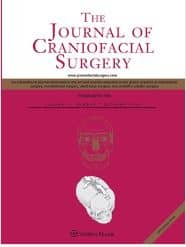
Localization and topography of the arteries on the middle forehead region for eluding complications following forehead augmentation: Conventional cadaveric dissection and ultrasonography investigation (2020)
Title : Localization and topography of the arteries on the middle forehead region for eluding complications following forehead augmentation: Conventional cadaveric dissection and ultrasonography investigation
Researcher : Phumyoo, T., Jiirasutat, N., Jitaree, B., Rungsawang, C., Pratoomthai, B., Tansatit, T.
Abstract :Forehead augmentation with filler injection is one of the most dangerous procedures associated with iatrogenic intravascular injection resulting in the severe complications. Nonetheless, few studies have determined the explicit arterial localization and topography related to the facial soft tissues and landmarks. Therefore, this study aimed to determine an arterial distribution and topography on the middle forehead region correlated with facial landmarks to grant an appropriate guideline for enhancing the safety of injection. Nineteen Thai embalmed cadavers were discovered with conventional dissection and 14 Thai healthy volunteers were investigated with ultrasonographic examination on the middle forehead. This study found that at the level of mid-frontal depression point, the transverse distance from the medial canthal vertical line to the superficial and deep branches of supraorbital artery were 9.1 mm and 15.1 mm, respectively. Whereas the depths from the skin of these arteries were 4.1 mm and 4.3 mm, respectively. Furthermore, the frontal branch of superficial temporal artery was detectable in 42.1% as an artery entering the forehead area. At the level of lateral canthal vertical line, the vertical distance of frontal branch was 31.6 mm, and the depth from skin of the artery was 2.7 mm. In conclusion, a proper injection technique could be performed based on an intensive arterial distribution and topography, and ultrasonographic examination before the injection is also suggested in order to restrict the opportunity of severe complications.
Keywords: Complication of filler injection , forehead augmentation , frontal branch of superficial temporal artery , superficial and deep branches of supraorbital artery , ultrasonographic investigation
Link to Academic article: https://journals.lww.com/jcraniofacialsurgery/Abstract/2020/10000/Localization_and_Topography_of_the_Arteries_on_the.43.aspx
Journal : Journal of Craniofacial Surgery, 2020, 31(7).
Bibliography : Phumyoo, T., Jiirasutat, N., Jitaree, B., Rungsawang, C., Pratoomthai, B., & Tansatit, T. (2020). Localization and topography of the arteries on the middle forehead region for eluding complications following forehead augmentation: Conventional cadaveric dissection and ultrasonography investigation. Journal of Craniofacial Surgery, 31(7), 2029–2035.
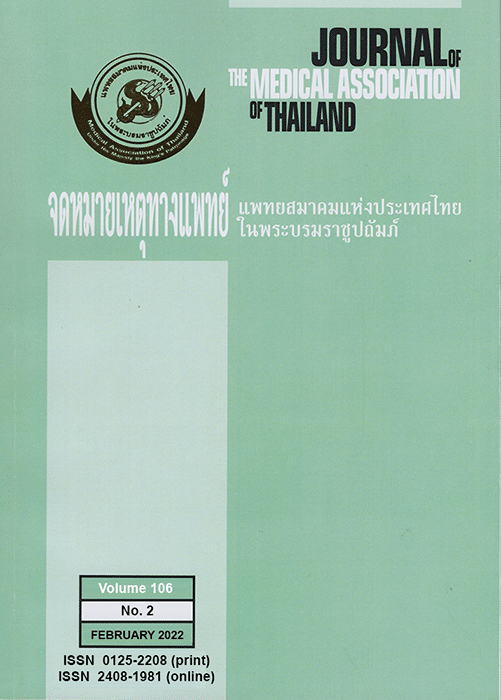
Obstetric and Neonatal Outcomes of Excessive Weight Gain in Different Pre-Pregnancy Body Mass Index using BMI Criteria for Asians by World Health Organization Western Pacific Region (WPRO) (2020)
Title : Obstetric and Neonatal Outcomes of Excessive Weight Gain in Different Pre-Pregnancy Body Mass Index using BMI Criteria for Asians by World Health Organization Western Pacific Region (WPRO)
Researcher : Somprasit, C., Tanprasertkul, C., Nanthakomon, T., Kovavisarach, E., Rattanasiri, T.,… Saksiriwutth, P.
Abstract : Objective: To evaluate the relationship between gestational weight gain and pre-pregnancy body mass index (BMI) on the risk of adverse obstetric and neonatal outcomes using cut off BMI criteria by Regional Office for the Western Pacific Region of WHO (WPRO).
Materials and Methods: The present study was a retrospective cohort. Subjects of live birth singletons who had full term delivered at four tertiary care centers, teaching university hospitals between January and December 2012 were enrolled. All pregnant women with pre-pregnancy BMI 18.5 kg/m2 or over were recruited and categorized into two groups, normal BMI and high BMI. The level of BMI at 18.5 to 22.9 kg/m2 was defined as normal BMI, and level at or over 23 kg/m2 was defined as high BMI, respectively. Gestational weight gain (GWG) was grouped into two categories as recommended weight gain (RWG) and excessive weight gain (EWG) which defined as 11.5 to 16 kg and above 16 kg in normal pre-pregnancy BMI and 5 to 9 kg and above 9 kg in high prepregnancy BMI, respectively. The association between RWG and EWG in different pre-pregnancy BMI groups and poor adverse pregnancy outcomes were evaluated.
Results: Two thousand seven hundred and thirty-three pregnant women were recruited. Normal and high pre-pregnancy BMI women were 1,840 (67.33%) and 893 (32.67%), respectively. Of these, 2,036 cases had complete data for evaluation. In normal prepregnancy BMI, 737 (59.58%) were categorized as RWG (11.5 to 16 kg) and 500 (40.42%) as EWG (>16 kg), while in high prepregnancy BMI, 273 (34.17%) were categorized as RWG (5 to 9 kg) and 526 (65.83%) as EWG (>9 kg). The mean weight gain in the normal pre-pregnancy BMI group was 13.80+1.35 kg vs. 20.39+3.84 kg in the RWG and EWG group, respectively. While the mean weight gain in high pre-pregnancy BMI group was 7.32+1.38 kg vs. 15.24+4.46 kg in the RWG and EWG group, respectively. In multivariate logistic analysis, normal pre-pregnancy BMI group with EWG had increased risk of instrumental delivery or cesarean section (Odd ratio; with OR 1.06, 95% CI 1.03 to 1.08, p<0.001) and high pre-pregnancy BMI group with EWG, there was significant\ increased risk of preeclampsia with birth weight above 90th centile (OR 1.09, 95% CI 1.04 to 1.15 and OR 1.09, 95% CI 1.06 to 1.12 with p = 0.001 and <0.001, respectively).
Conclusion: For pregnant women with high pre-pregnancy BMI by WPRO criteria increased the risk of pregnancy complications and adverse pregnancy outcomes especially in excessive weight gain women. The high pre-pregnancy BMI should be a concern for pre-conception counseling. Optimal GWG ranges should develop based on pre-pregnancy BMI cut off for Asian women.
Keywords: Neonatal birth weight, Gestational weight gain, Pre-pregnancy BMI, WPRO
Link to Academic article: http://www.jmatonline.com/index.php/jmat/article/view/11079
Journal : Journal of the Medical Association of Thailand, 2020, 103(Suppl.4)
Bibliography : Somprasit, C., Tanprasertkul, C., Nanthakomon, T., Vinayanuvattikhun, N., Kovavisarach, E., Panichakul, P.,… Saksiriwutth, P. (2020). Obstetric and Neonatal Outcomes of Excessive Weight Gain in Different Pre-Pregnancy Body Mass Index using BMI Criteria for Asians by World Health Organization Western Pacific Region (WPRO). Journal of the Medical Association of Thailand, 103(Suppl.4), 88–93.
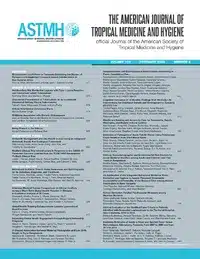
Seroprevalence of Dengue, Zika, and Chikungunya Viruses in Wild Monkeys in Thailand (2020)
Title : Seroprevalence of Dengue, Zika, and Chikungunya Viruses in Wild Monkeys in Thailand
Researcher :Tongthainan, D., Mongkol, N., Jiamsomboon, K., …Tulayakul, P., Boonnak, K.
Abstract : Zoonotic pathogens such as arboviruses have comprised a significant proportion of emerging infectious diseases in humans. The role of wildlife species as reservoirs for arboviruses is poorly understood, especially in endemic areas such as Southeast Asia. This study aims to determine the exposure history of different macaque species from national parks in Thailand to mosquito-borne flaviviruses and alphavirus by testing the serum samples collected from 25
northern pigtailed macaques, 33 stump-tailed macaques, and 4 long-tailed macaques for the presence of antibodies against dengue, Zika, and chikungunya viruses by plaque reduction neutralization assay. Specific neutralizing antibodies against Dengue virus (DENV1-4) and Zika virus (ZIKV) were mainly found in stump-tailed macaques, whereas neutralizing antibody titers were not detected in long-tailed macaques and pigtailed macaques as determined by 90% plaque
reduction neutralization assay (PRNT90). One long-tailed macaque captured from the south of Thailand exhibited antibody titers against chikungunya virus (CHIKV), suggesting enzootic of this virus to nonhuman primates (NHPs) in Thailand. Encroachment of human settlements into the forest has increased the interface that exposes humans to zoonotic pathogens such as arboviruses found in monkeys. Nonhuman primates living in different regions of Thailand showed different patterns of arboviral infections. The presence of neutralizing antibodies among wild monkeys in Thailand strongly suggests the existence of sylvatic cycles for DENV, ZIKV, and CHIKV in Thailand. The transmission of dengue, Zika, and chikungunya viruses among wild macaques may have important public health implications.
Link to Academic article: DOI: https://doi.org/10.4269/ajtmh.20-0057
Journal : American Journal of Tropical Medicine and Hygiene, 2020, 103(3).
Bibliography : Tongthainan, D., Mongkol, N., Jiamsomboon, K., Suthisawat, S., Sanyathitiseree, P., Sukmak, M.,… Boonnak, K. (2020). Seroprevalence of Dengue, Zika, and Chikungunya Viruses in Wild Monkeys in Thailand. American Journal of Tropical Medicine and Hygiene, 103(3), 1228–1233.

Sustainable Development Goals 2018-2020 Report
Title : Sustainable Development Goals 2018-2020 Report
Department : Siam University, 38 Petchkasem Rd., Bang Wa, Phasi Charoen, Bangkok 10160, Thailand
[dflip id="7883"][/dflip]
Bibliography : Siam University. (2020). Sustainable Development Goals 2018-2020 Report. Bangkok, Thailand: Author.

The Study on Thailand’s Particulate Matter 2.5 (PM 2.5) Management in Accordance with The World Health Organization (WHO) Guidelines (2020)
Title : The Study on Thailand’s Particulate Matter 2.5 (PM 2.5) Management in Accordance with The World Health Organization (WHO) Guidelines
Researcher :Wichittraphon Sukcharoen, Phitchakorn Tangaromsuk, Mooktapa Sontiatchara, Kotchaphon Waithayakul, Chirayu Savedkairop, Jidapa Poopongpet, Ratarat Kengkoom, Sakkarin Bhubhanil, & Sarawut Lapmanee
Department : Faculty of Medicine, Siam University, Bangkok, Thailand
E-mail : sarawut.lap@siam.ed
Abstract : Objective: To study Thailand’s particulate matter 2.5 (PM 2.5) management in line with the World Health Organization (WHO) guidelines.
Methods: This academic article aims to review about the health effects of PM 2.5 and study Thailand’s solutions. The plan is to analyze national policies, national development plans, environmental situation reports, air pollution and dust management in Thailand and sample countries, namely China, Japan, and Vietnam in conformity with the WHO guidelines covering six areas, i.e. industry, energy, transport, urban planning, power generation, municipal and agricultural waste management.
Results: PM 2.5 affects free radicals balance, induces inflammation in lung tissue and cell death, as well as causes respiratory and cardiovascular disorders. However, Thailand has adopted PM 2.5 solution measures in line with the WHO guidelines and performed in the same way as other sample countries to control PM 2.5.
Conclusions: As PM 2.5 is harmful to health, Thailand has introduced urban pollution management methods followed the WHO guidelines to reduce health problems and enhance people’s quality of life.
Keywords: Air pollution, Particulate Matter 2.5 microns, Policy, WHO
Link to Academic article: DOI: https://doi.org/10.14456/vmj.2020.34
Journal : Vajira Medical Journal: Journal of Urban Medicine, Vol. 64 No. 5 (2020): SEP – OCT 2020
Bibliography : Wichittraphon Sukcharoen, Phitchakorn Tangaromsuk, Mooktapa Sontiatchara, Kotchaphon Waithayakul, Chirayu Savedkairop, Jidapa Poopongpet, Ratarat Kengkoom, Sakkarin Bhubhanil, & Sarawut Lapmanee. (2020). The study on Thailand’s particulate matter 2.5 (PM 2.5) management in accordance with The World Health Organization (WHO) guidelines. Vajira Medical Journal: Journal of Urban Medicine, 64(5), 345-356.

การจัดการทางการสื่อสารในองค์กรในช่วงการทำงานที่บ้าน (2563)
Title : การจัดการทางการสื่อสารในองค์กรในช่วงการทำงานที่บ้าน (Communication management in organization during work from home)
Researcher : ดร.ธีติมา ปิยะศิริศิลป์
Department : MBA, Siam University, Bangkok, Thailand
E-mail : teetima_p@yahoo.com
บทคัดย่อ : การวิจัยนี้เป็นการวิจัยเชิงคุณภาพ โดยใช้วิธีการสัมภาษณ์เชิงลึก (In-depth Interview) จากบุคลากรในมหาวิทยาลัยสยาม ร่วมกับการสังเกตแบบมีส่วนร่วม โดยผู้วิจัยใช้วิธีการเลือกกลุ่มตัวอย่างแบบเจาะจง (Purposive Sampling) เครื่องมือที่ใช้ในการรวบรวมข้อมูล คือ การสัมภาษณ์แบบกึ่งโครงสร้าง (Semi-Structured or the general
interview guide approach) และมีการนำเสนอข้อมูลจากการวิเคราะห์ด้วยการเขียนเชิงพรรณนา (Descriptive Analysis) มีวัตถุประสงค์เพื่อศึกษาการจัดการทางการสื่อสารในองค์กรในช่วงการทำงานที่บ้าน ผลการวิจัยพบว่า บุคลากรของมหาวิทยาลัยสยามมีการสื่อสารแบบเป็นทางการ (Formal Communication) ในลักษณะการสื่อสารแบบบนลงล่าง (Downward Communication) การสื่อสารแบบล่างขึ้นบน (Upward Communication) การสื่อสารแบบแนวทแยง (Diagonal Communication) การสื่อสารแบบแนวราบ (Lateral or Horizontal Communication) และการสื่อสารแบบไม่เป็นทางการ (Informal Communication) รวมทั้งมีการสื่อสารในรูปแบบการสื่อสารสองทา ง (Two-way communication) การสื่อสารยังเป็นแบบเห็นหน้าค่าตา (Face to face communication) และสื่อสารแบบข้อมูลป้นกลับ (Feedback) นอกจากนี้การจัดการทางการสื่อสารมีความสำคัญมากและส่งผลต่อการเรียนการสอน การทำงาน การติดต่อ และการประสานงานในองค์กร
คำสำคัญ : การจัดการทางการสื่อสาร, การสื่อสารในองค์กร, การทำงานที่บ้าน
Abstract : This research is a qualitative research. Data was collected by in-depth Interview from employees in Siam University and participatory observation. The researcher was employed purposive sampling, semi-structured or the general interview guide approach, and the research result was presented into descriptive analysis. This research aimed to investigate the management communication in Organization during work from home. The results reveal that
personnel of Siam University have been using formal communication and informal communication in form of downward communication, upward communication, diagonal communication and lateral or horizontal Communication. Including two-way communication, face to face communication, and feedback. Moreover, communication in management plays an important role and effects to learning, working, and coordinating in organization.
Keywords : Management Communication, Communication in Organization, Work from Home.
Proceeding : การประชุมวิชาการระดับชาติและนานาชาติ National and International Academic Conference Innovation and Management for Sustainability 9-10 July 2020 Eastin Grand Hotel Sathorn Bangkok
Link to Proceeding SECTION 1 : Link Download (compressed 8 MB) | Link Download (39.9 MB )
Bibliography : ธีติมา ปิยะศิริศิลป์ และ ไกรฤทธิ์ บุณยเกียรติ. (2563). การจัดการทางการสื่อสารในองค์กรในช่วงการทำงานที่บ้าน (Communication management in organization during work from home). ใน รายงานการประชุม การประชุมวิชาการระดับชาติและนานาชาติ National and International Academic Conference Innovation and Management for Sustainability 9-10 July 2020 (หน้า 510-525). กรุงเทพฯ: มหาวิทยาลัยสยาม.
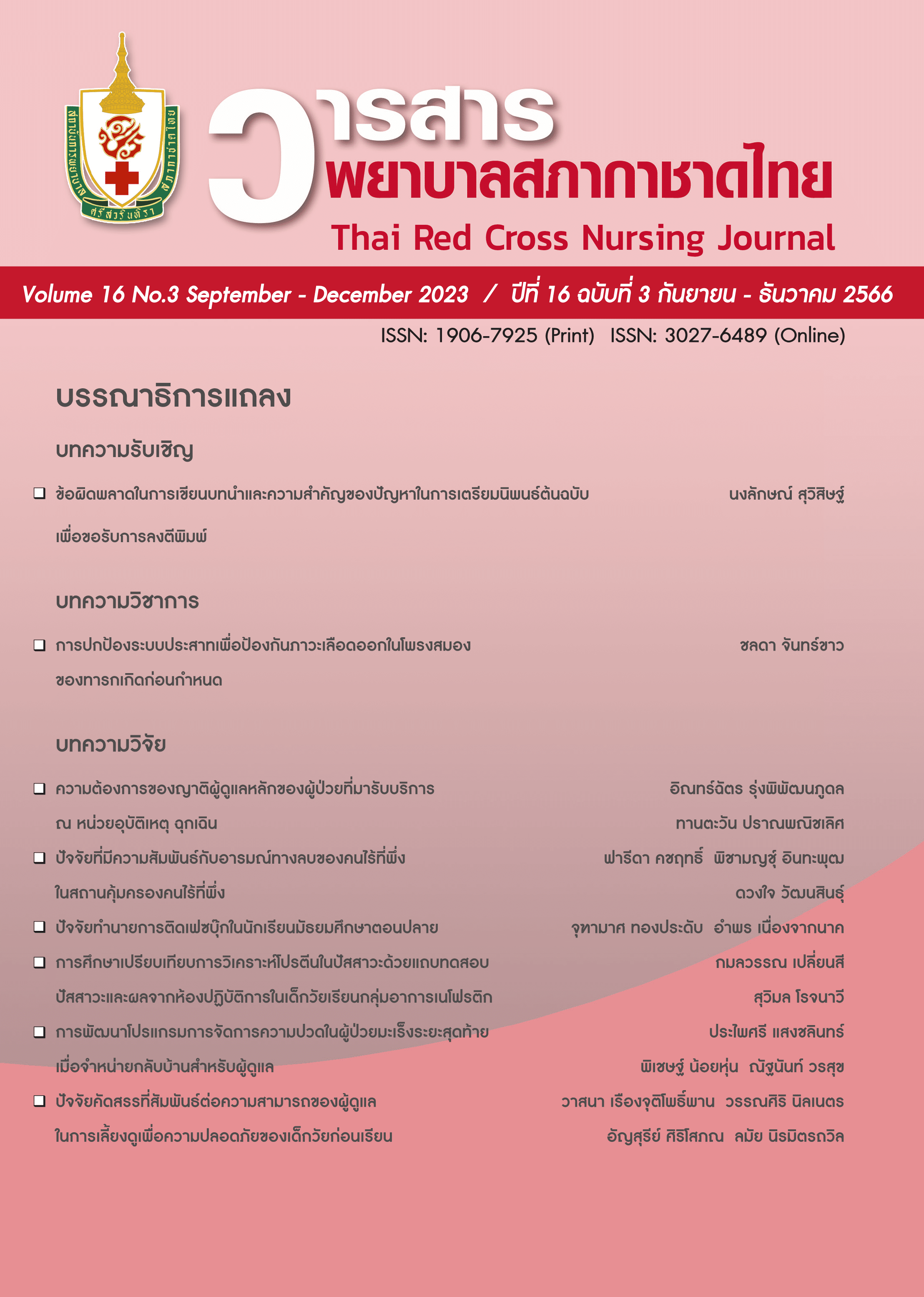
การประเมินนโยบายการใช้ยาอย่างสมเหตุผลในหลักสูตรพยาบาลศาสตรบัณฑิต และสมรรถนะ การใช้ยาอย่างสมเหตุผลของอาจารย์พยาบาล (2563)
ชื่อบทความ : การประเมินนโยบายการใช้ยาอย่างสมเหตุผลในหลักสูตรพยาบาลศาสตรบัณฑิต และสมรรถนะ การใช้ยาอย่างสมเหตุผลของอาจารย์พยาบาล
Title : An Evaluation of the Policy of Integrating RDU Curriculum into the Bachelor of Nursing Science Program and RDU Competency of Nurse Instructors
ผู้เขียน/Author : ภาวิดา พุทธิขันธ์, กนกเลขา สุวรรณพงษ์, นฤมล อังศิริศักดิ์, กมลรัตน์ เทอร์เนอร์ และ สุนทราวดี เธียรพิเชฐ
Researcher : Phawida Putthikhan, Kanoklekha Suwannapong, Naruemol Angsirisak *, Kamolrat Turner & Suntharawadee Theinpichet
Department : * Faculty of Nursing, Siam University, Bangkok, Thailand
ฐานข้อมูลงานวิจัย มหาวิทยาลัยสยาม : https://e-research.siam.edu/kb/an-evaluation-of-the-policy/
Link to article : วารสารพยาบาลสภากาชาดไทย ปีที่ 13 ฉบับที่ 1 ม.ค.-มิ.ย. 63 | Thai Red Cross Nursing Journal Vol. 13 No. 1 January – June (2020) https://he02.tci-thaijo.org/index.php/trcnj/article/view/243833
Link to Published: วารสารพยาบาลสภากาชาดไทย / TCI 1
Bibliography : ภาวิดา พุทธิขันธ์, กนกเลขา สุวรรณพงษ์, นฤมล อังศิริศักดิ์, กมลรัตน์ เทอร์เนอร์ และ สุนทราวดี เธียรพิเชฐ. (2563). การประเมินนโยบายการใช้ยาอย่างสมเหตุผลในหลักสูตรพยาบาลศาสตรบัณฑิต และสมรรถนะ การใช้ยาอย่างสมเหตุผลของอาจารย์พยาบาล. วารสารพยาบาลสภากาชาดไทย, 13(1), 282-301.